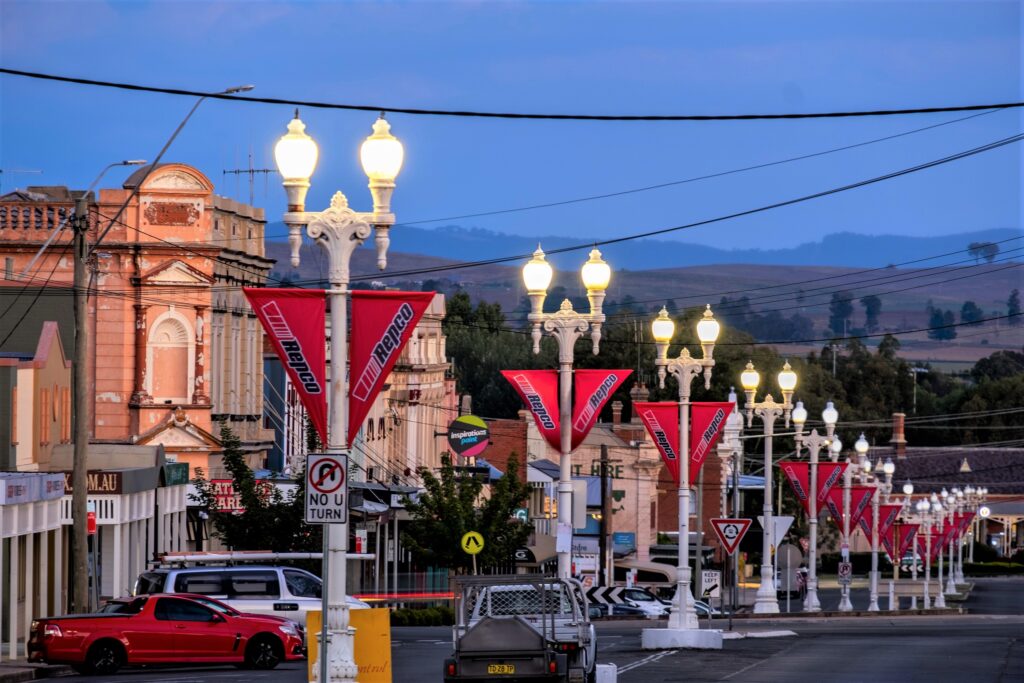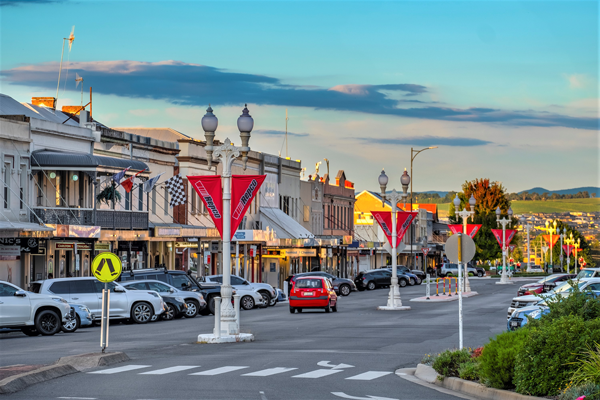Most people in Australia would be familiar with the large retailer, Beacon Lighting. How does CLS fit into the Beacon structure?
Connected Light Solutions is 100% owned by the Beacon Lighting Group which has a long association with GE Lighting.
Tell us about the history of CLS and the role that CLS plays in the street lighting market.
The history of Connected Light Solutions begins with its origin as GE Lighting Australia. Globally, GE Lighting had a strong presence in streetlighting for many years, particularly known for the famous Cobra head streetlight. The company was an early adopter of LEDs for streetlighting, which led to them securing a contract to upgrade the street and public areas in the City of Sydney with LED streetlights. This project was the first large-scale upgrade of its kind in Australia and preceded similar initiatives in many international cities. The project focused on streets, public parks, and pedestrian areas.
In Australia, most public street lighting was owned by electricity utilities due to the lights sharing poles with power cables. In 2010, there were over 2 million streetlights using mercury vapour lamps for residential road lighting. These streetlights were highly inefficient compared to LED lights and contained high mercury content, prompting plans to ban their usage. However, due to the differing lighting standards and construction requirements in Australia compared to Europe and North America, GE Lighting developed a residential streetlight tailored specifically to meet Australian requirements.
In 2017, as part of a global restructuring, GE Lighting sold its lighting assets to the Beacon Lighting Group, which sought to diversify its investments beyond retail lighting. Initially, the business operated under the name Light Source Solutions but was later rebranded as Connected Light Solutions to represent its focus on the future of digital lighting and the ability to manage and control lighting systems efficiently.
What are some of the key public lighting projects that CLS has been involved in?
The City of Sydney embarked on a pioneering project in Australia, collaborating with UGL GE in a joint venture to design, supply, install, and maintain GE streetlights, which replaced over 8000 old public lights. This endeavour was far more comprehensive than typical supply-only contracts, providing the team with valuable experience in handling the practical advantages and challenges of LED upgrades, both in the short and long term.
The City of Darwin has also been a long-term partner in this venture, serving as an excellent reference for the GE streetlights’ ability to withstand the most demanding environmental conditions in Australia.
Furthermore, in the Northern Territory, CLS supplied P Cat streetlights to the City of Palmerston. These streetlights were equipped with a lighting control system similar to Darwin’s and featured a Zhaga socket, enabling the addition of sensors.
Over the last decade, the primary focus has been on supplying the P Cat residential streetlight to DNSPs in NSW, Victoria, and Queensland. These streetlights have been effectively replacing old 80W Mercury streetlights.
CLS has done some innovative work with LED retrofit lamps. Can you explain what they are and what applications they are best suited to?
GE has developed an LED lamp specifically designed to replace 80W and 125W Mercury lamps in decorative streetlights. This lamp can easily replace the Mercury lamp; however, most clients choose to remove old control gear to enable further power savings. Additionally, a fan has been added to the lamps used in enclosed fixtures, ensuring that the LEDs stay cool and offer a long lifespan of 50,000 hours.
These lamps provide an excellent solution for clients who have decorative streetlights. Opting for a full replacement with new LED fixtures would be expensive and challenging to maintain the architectural style of the existing decorative or heritage fixtures. The installation at Bathurst serves as a great example of this.

There is a lot of interest at the moment in smart street lighting controls. What does CLS offer in this space?
CLS has formed a partnership with Telematics, one of Europe’s, USA’s, South America’s, and Auckland’s leading suppliers of lighting controls. This system is ideal for effectively managing a substantial number of streetlights in large cities. To enhance this technology further, CLS has also recently teamed up with Flashnet, a specialist in interoperable lighting control systems. Flashnet’s systems utilise cellular and LORaWan communication and can be easily installed in smaller quantities, making them suitable for councils and facility owners.
What emerging technologies do you see as most exciting over the next few years?
The most exciting change in the next few years will be brought about by AEMO and the metering regulations. These changes will enable the installation of lighting controls, currently available in limited quantities, to be expanded significantly. The ultimate goal is to make all streetlights addressable and controllable. By building on this advancement in streetlighting, we can lay the foundation for smart cities. This network of streetlights will not only provide safe and efficient lighting but also offer valuable data to enhance the quality of life and sustainability in ever-growing urban areas.














